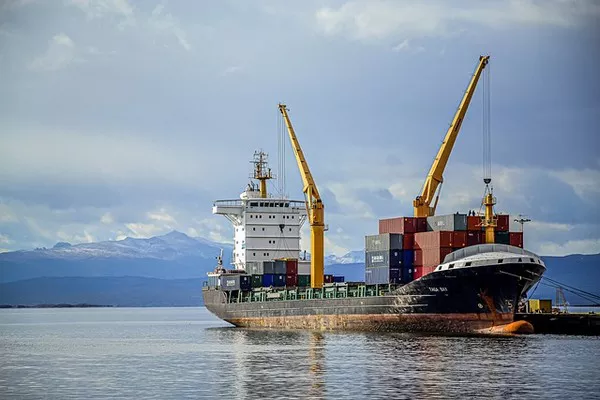On a tributary of the Hudson River, the NH3 Kraken, a tugboat converted to run on ammonia, made its inaugural voyage, showcasing a significant advancement in reducing carbon emissions within the maritime industry. Previously reliant on diesel fuel, this 67-year-old vessel has been transformed by the New York-based startup Amogy, which aims to revolutionize maritime fuel usage with clean, ammonia-derived energy.
The NH3 Kraken’s launch marks a critical milestone in the quest for zero-emissions propulsion, particularly as emissions from shipping have surged to account for approximately 3% of global greenhouse gas emissions over the past decade, according to the United Nations. As vessels have grown larger to transport more cargo, their fuel consumption has increased significantly.
CEO Seonghoon Woo, who co-founded Amogy with three colleagues from the Massachusetts Institute of Technology (MIT), emphasized the urgency of transitioning the shipping industry to clean energy. “This is a problem for our generation,” he stated. The team conceptualized their venture during the COVID-19 pandemic, aiming to address heavy industry’s reliance on fossil fuels. Amogy’s name merges “ammonia” and “energy,” reflecting its focus on developing sustainable solutions.
The NH3 Kraken was acquired from Feeney Shipyard in Kingston, New York, where it had been largely unused. “It represents how serious the problem is when it comes to climate change,” Woo said. The project aims not only to demonstrate Amogy’s technology but also to advocate for urgent action against climate change.
Amogy’s system utilizes ammonia to produce hydrogen, which then powers a fuel cell, enabling the tugboat to operate without carbon emissions. The International Maritime Organization has set ambitious goals for the shipping industry to reach net-zero greenhouse gas emissions by around 2050, further underscoring the importance of innovative solutions like ammonia as an alternative fuel.
Ammonia is gaining attention as a potential main fuel for shipping due to its carbon-free composition. Jesse Fahnestock, head of decarbonization at the Global Maritime Forum, noted that ammonia’s existing infrastructure for transportation and storage, coupled with its higher energy density compared to hydrogen, makes it a promising candidate for maritime fuel.
However, ammonia’s production methods and toxicity present challenges. Most ammonia is currently derived from natural gas, which poses environmental concerns. Amogy differentiates itself by using green ammonia, produced through renewable energy sources. The NH3 Kraken’s 2,000-gallon tank allows for 10 to 12 hours of operation at sea, splitting ammonia into hydrogen and nitrogen, then using the hydrogen to generate electricity.
Amogy’s journey began with powering drones in 2021 and has since expanded to tractors and semi-trucks, culminating in the successful operation of the ammonia-powered tugboat. Woo highlighted that the technology can be scaled for vessels of various sizes, as well as for generating electricity in other heavy industries.
Having raised around $220 million, Amogy has garnered significant interest from investors, including Amazon, which is eager to promote zero-emission shipping. Nick Ellis from Amazon’s Climate Pledge Fund expressed confidence in Amogy’s technology, highlighting its potential for widespread adoption in the shipping industry within a few years.
Other companies are also exploring ammonia-powered shipping solutions, such as Fortescue’s Green Pioneer vessel and Yara Clean Ammonia’s upcoming ammonia-powered container ship, the Yara Eyde, set to launch in 2026.
As a next step, Amogy is collaborating with major shipbuilders like Hanwha Ocean, HD Hyundai, and Samsung Heavy Industries to further integrate ammonia technology into the maritime sector. Sangmin Park from HD Hyundai emphasized the significance of Amogy’s successful demonstrations, suggesting that the industry is poised to accelerate the adoption of ammonia as a clean fuel source.
The successful launch of the NH3 Kraken is a landmark event for the maritime industry, showcasing a viable path toward a sustainable future.

